NORTH WALES COAST RAILWAY:NOTICE BOARD
Rheilffordd arfordir gogledd Cymru: Hysbysfwrdd
03 August 2020



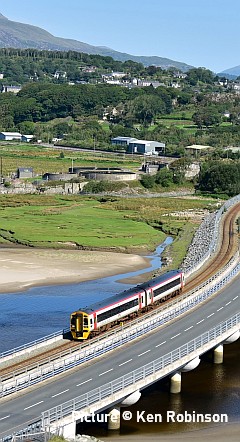
Forthcoming events
(see also our Calendar page for venues)
Note: we have removed all entries relating to meetings as the events are cancelled.
September 2020
Saturday 5 September Steam at Chester 'The Cheshireman' (Railway Touring Company). Norwich to Chester. Loco 6233 for part of the journey.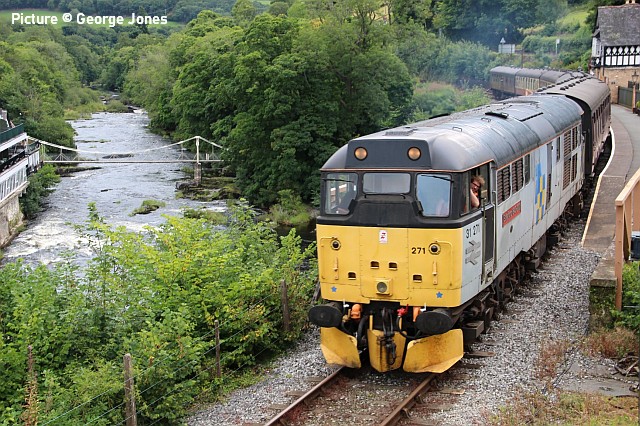
31 271 Stratford 1840-2001 was in use on 29 July on the Llangollen Railway for operational staff competency assessment and renewal following lockdown. Public service (not serving intermediate stations) between Llangollen and Carrog re-started on 1 August. Picture at Berwyn by George Jones.
Class 230 doings
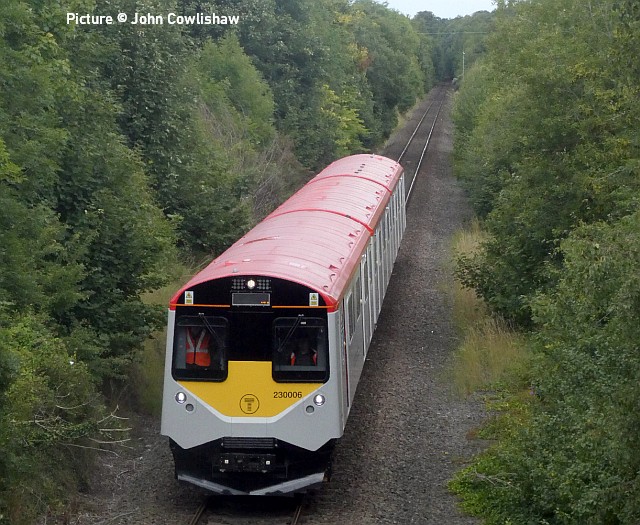
On Tuesday 28 July 230 006 made a trip from Birkenhead EMU Depot to Chester DMU Depot via Wrexham and is seen here approaching the top of Gresford Bank with the 11:49 return working. Picture by John Cowlishaw who writes: 'It was very quiet in its ascent of the climb, almost effortless.'
Is there anyone who can explain the technical details of how these units operate? The many hybrid buses now in operation seem to work on the principle that the wheels are driven by electric motors fed by a battery which is kept charged by a diesel-powered generator that operates automatically when needed. Does the Class 230 work the same way? We 've seen mention of GPS controlling where the engine operates , and possible fixed charging points for the batteries.
The view from Bannel Lane bridge - by Stephen Dennett
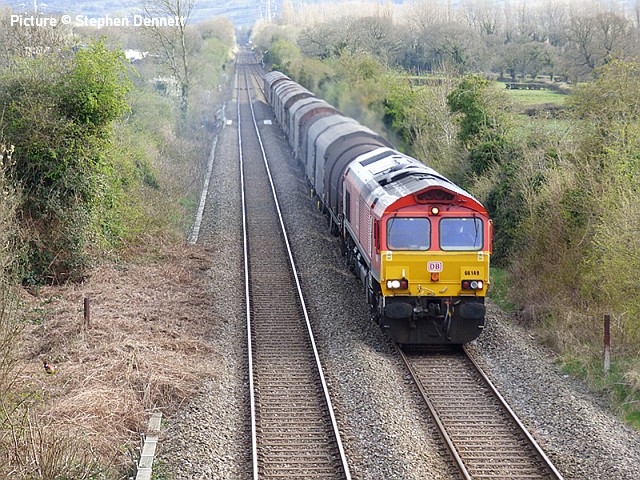
During Covid-19 lockdown, I often walk down to Bannel Lane bridge, near Buckley station to see the evening Margam - Dee Marsh steel train. Here are four views of the Class 66 hauled train on different days. Above, 66 149 on 1 April.
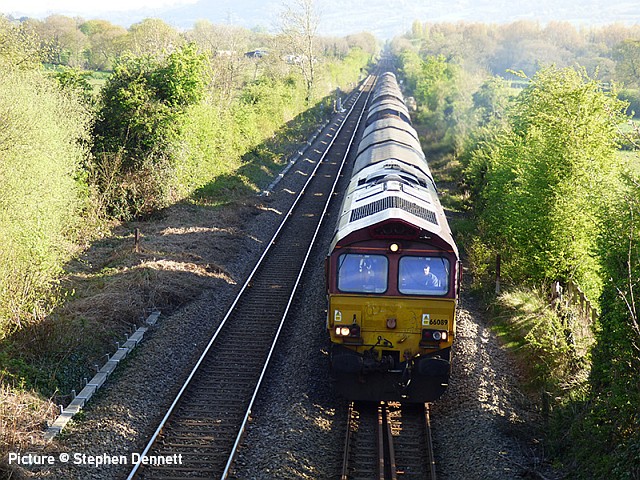
66 089 on 15 April.
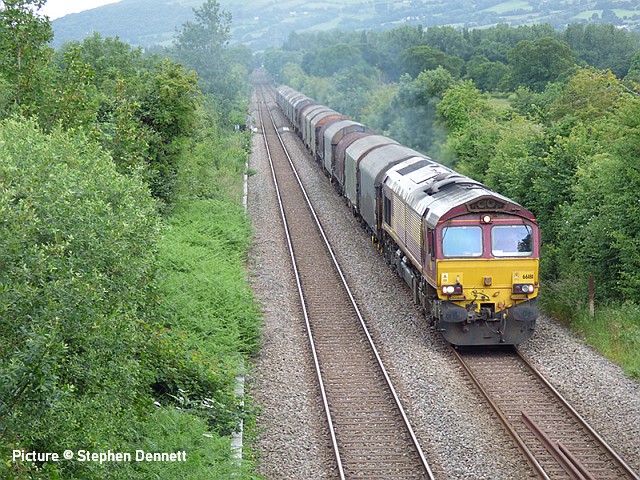
66 181 on 26 June.

66 198, passes on 30 July.
Seen from a cycle ride - by Greg Mape
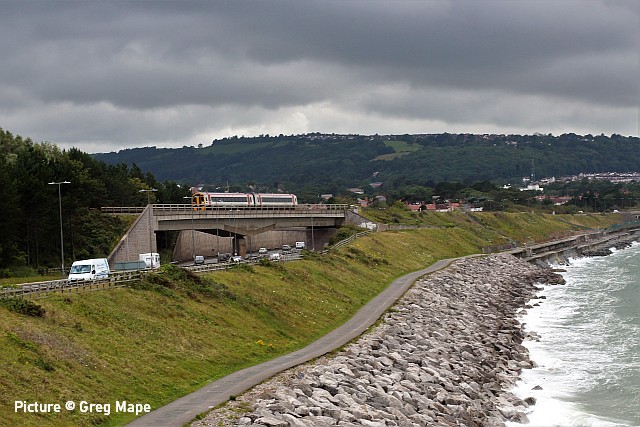
Under a threatening sky, a Crewe - Bangor Class 158 makes its way across the A55 Expressway, 27 July.
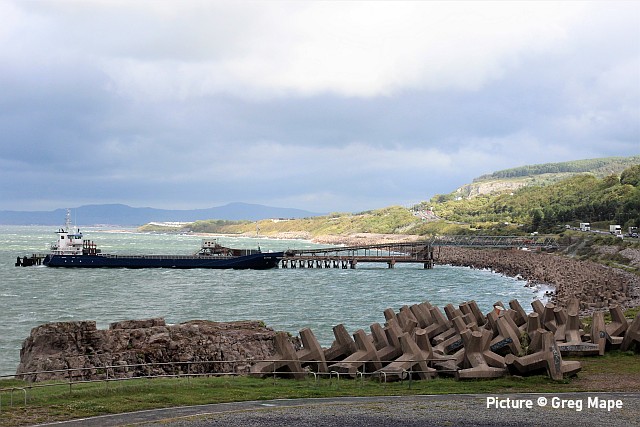
A vessel at Raynes Jetty.
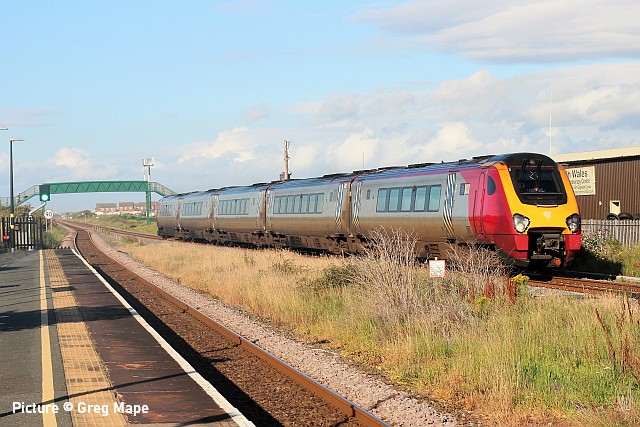
A Voyager at Abergele station.
Dave Sallery's Archive Selection
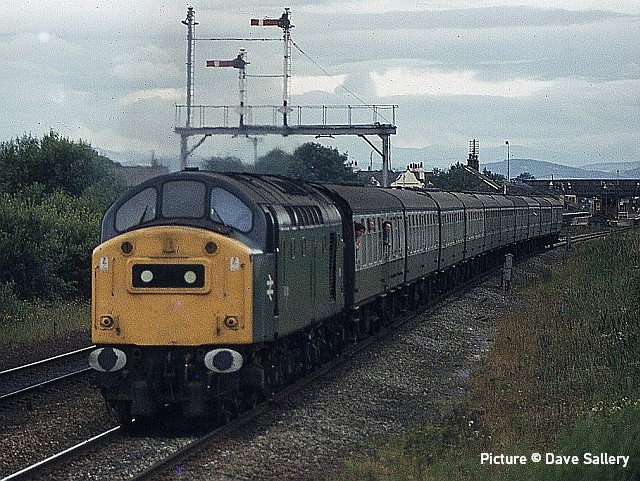
40 060 passes Prestatyn with 1G80, the 16:40 Llandudno - Birmingham, return working of the 09:25 Birmingham - Llandudno, complete with a contingent of 'bashers' in the front coach. In 1875 this loco was one of the 40s renumbered for engineers' use related to the rebuilding of Crewe station. This one became 97 405 and worked a variety of ballast trains and other freights until withdrawal in 1987. (Thanks to the Class 40 Motherlist for information.)
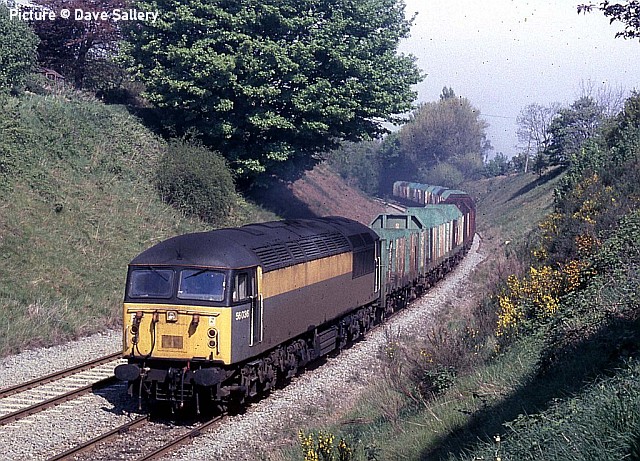
In the 1990s the railway carried logs to the Shotton Paer works using 'OTA' wagons converted from other types if air-braked stock. On 6 May 1996 56 036 passes Hawarden with empties en route for Scotland...
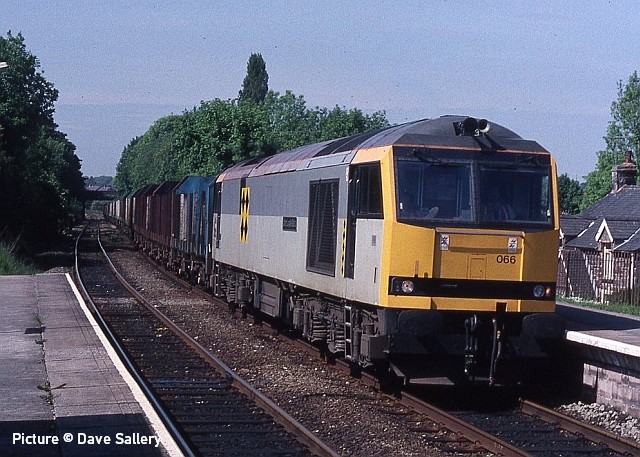
... and 60 066 John Logie Baird on the same service passing Caergwrle, 31 May 1994, sporting the black diamonds of the coal sector. This loco is still in traffic today with DB Cargo, un-named in a silver 'Drax' livery.
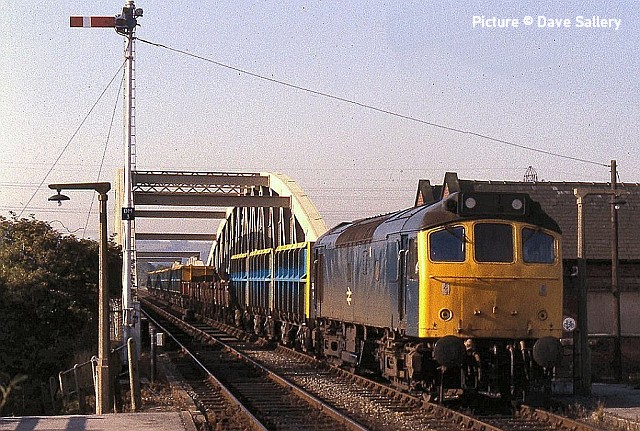
Long since withdrawn 25 265 comes off the bridge and into Hawarden Bridge station on 12 September 1985. The hydraulic apparatus to swing the bridge was formerly housed in a large brick tower immediately behind the loco until it was demolished in 1980. The tall semaphore has also succumbed to progress and is now a two-aspect colour light signal. The train is mainly formed of 'SSA' scrap metal-carrying wagons because at this time the old steelworks was in the process of being demolished.
Looking back: Bidston area - with David Pool
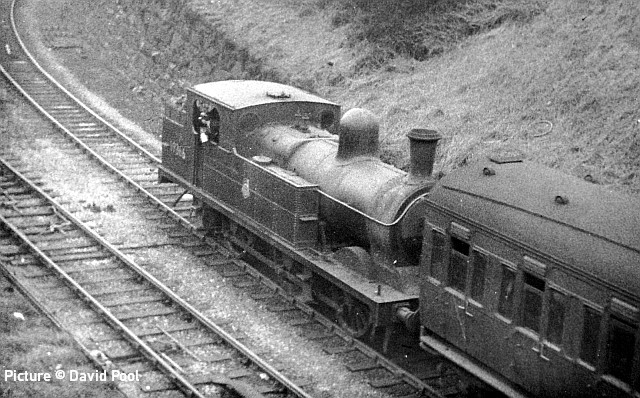
The line from Wrexham to Seacombe tended to be “under the radar” for Merseyside railway enthusiasts in the 1950s – no prestige expresses or ex GWR locomotives, and the passenger trains were headed by ex-LNER tank locomotives. Class N5 69366, a Wrexham (6E) locomotive, was approaching the Seacombe terminus on 4 April 1955. It was withdrawn the following year.
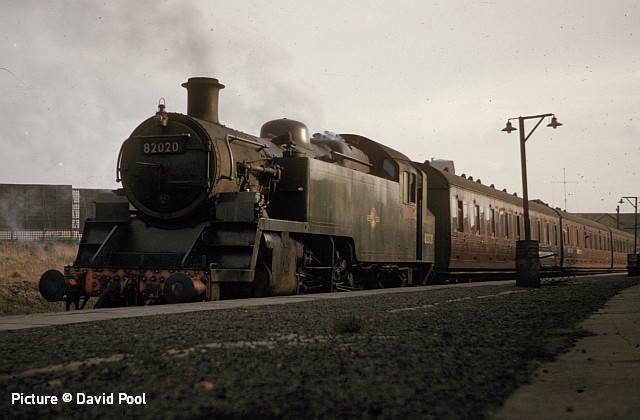
This was my first Kodachrome colour slide, taken at Seacombe on 31 December 1959. Standard Class 3 82021 is on the 11:29 to Wrexham, the LMR and BR Standard tanks having taken over the passenger workings. Passenger services were withdrawn between Seacombe and Bidston from 4 January 1960, when diesel units took over the passenger duties from Wrexham.
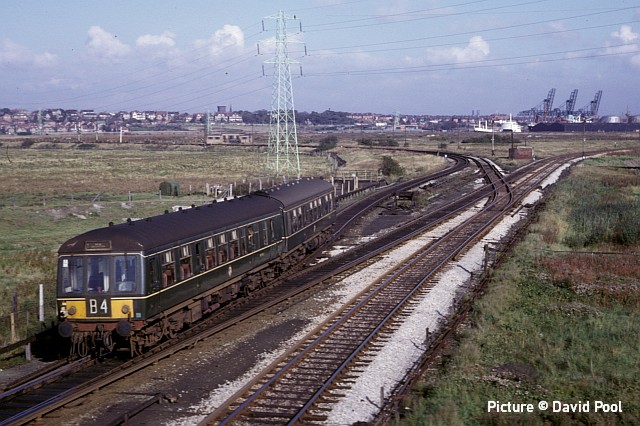
With the closure of Seacombe station, trains from Wrexham were diverted to New Brighton, via the triangular junction at Bidston. Class 108 M51568/M50930 is heading towards Wallasey and New Brighton on 27 September 1964 with the 14:57 from Wrexham. The majority of travellers would have been going to Liverpool via the Mersey Railway, changing at Bidston, having previously used the ferry from Seacombe, so the New Brighton destination was not well patronised. In 1971 the Wrexham trains were diverted to Birkenhead North, which gave a more frequent service to Liverpool than did Bidston.
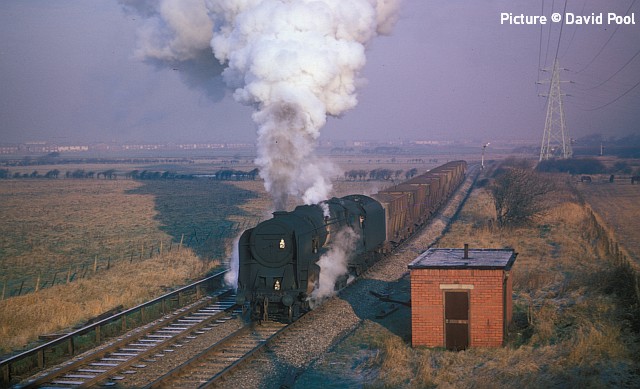
The iron ore trains between Bidston Dock and Shotton were still worked by steam in 1967, and with a seven-day operation it was very convenient to be able to see them at weekends. On a very frosty Sunday morning on 8 January 1967 Class 9F 92150 is getting away from Bidston East Junction, and preparing to tackle the gradient a few miles further on at Storeton.
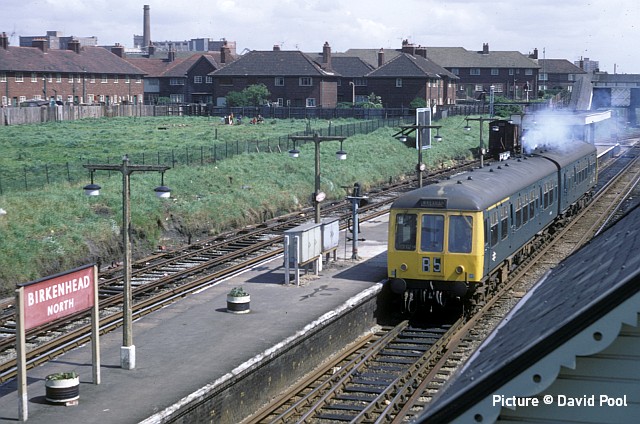
Class 108 M51563/M50926 is leaving Birkenhead North with the 14:47 to Wrexham on 15 May 1971. Although the use of Birkenhead North as the terminus for Wrexham trains provided a convenient interchange with the Merseyrail electrics, the pathing of Wrexham trains from Bidston with trains from West Kirby and New Brighton was difficult at peak times. Eventually the withdrawal of the Wrexham trains beyond Bidston enabled a one hour interval service to be introduced, with short reversal times at each end. This is the current arrangement for weekday trains between Wrexham and Bidston.
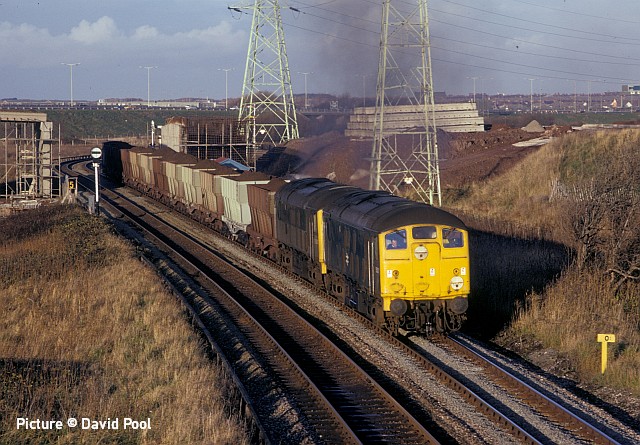
Almost six years after my photograph of 92150, much has changed near Bidston East Junction. The Bidston By-pass is being constructed, and the M53 Wallasey Tunnel approach roads are in the distance, while the Summers trains are now diesel hauled. Class 24s 5031 and 5038 were photographed on 3 December 1972.
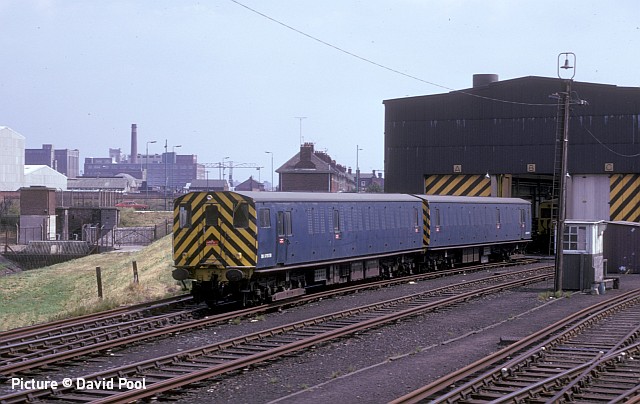
On 6 July 1975 I could see from a distance an interesting unit on Birkenhead North Depot. The only way to get a photo was to shoot from the window of a passing train, and the purchase of a return ticket from Birkenhead North station to Bidston (one mile away) was met with some surprise. The Departmental unit was DB 975178/DB 975179, which had been converted to battery operation at Wolverton in 1974, having previously been a Class 501 on the Watford line.
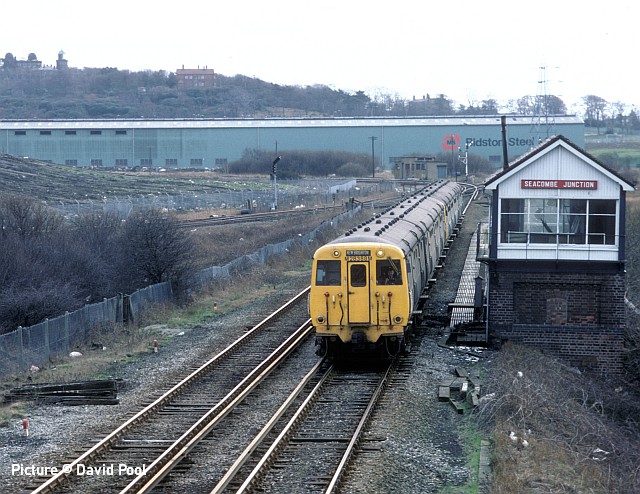
Class 503 M28388M is passing Seacombe Junction box with a train to New Brighton on 24 March 1984. The Class 503 electrics now had an end door in the cabs as a safety feature for the Liverpool Loop Line, unlike the Class 502 electrics on the other side of the Mersey. The line trailing in on the left is from Bidston Dock, and traces of the line from Seacombe, which had been nearer the box, have long since disappeared. The Bidston Steel building is now the site of the Tesco Superstore...
Cambrian Corner - by Ken Robinson
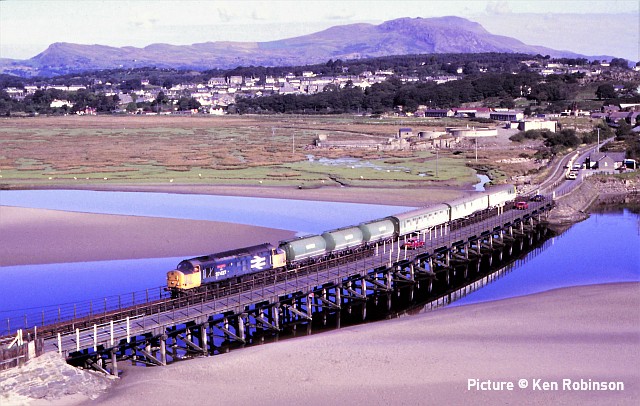
The annual weedkiller [or vegetation control] train visited the Cambrian Coast line on Friday night 24 July with two NR 97s topping and tailing an MPV unit. The rain and darkness prevented me from obtaining any photos, but here is a photograph of 37 427 on weed killing duties crossing Bont Briwet near Penrhyndeudraeth back in July 1988.
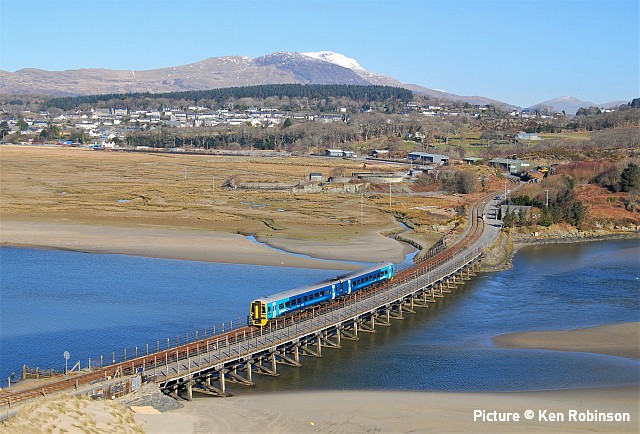
Two other photographs taken from a similar position: above. 158 836 crossing Bont Briwet on 3 April 2013, just before work to dismantle the old bridge commenced.
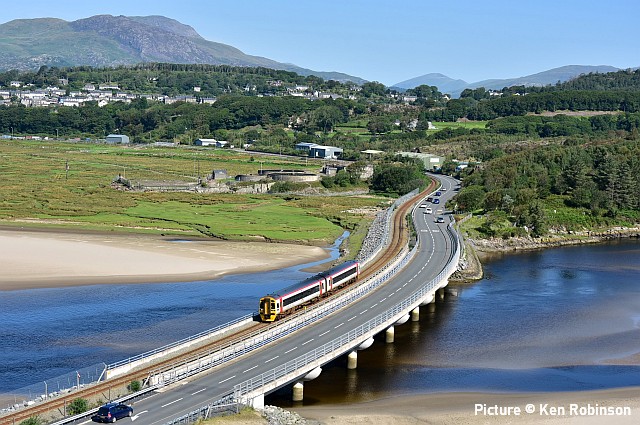
158 827 crossing the 'new' bridge with the 09:34 Pwllheli-Birmingham International on a very sunny 31 July 2020.
North Wales Coast home page | Archive | Previous Notice Board